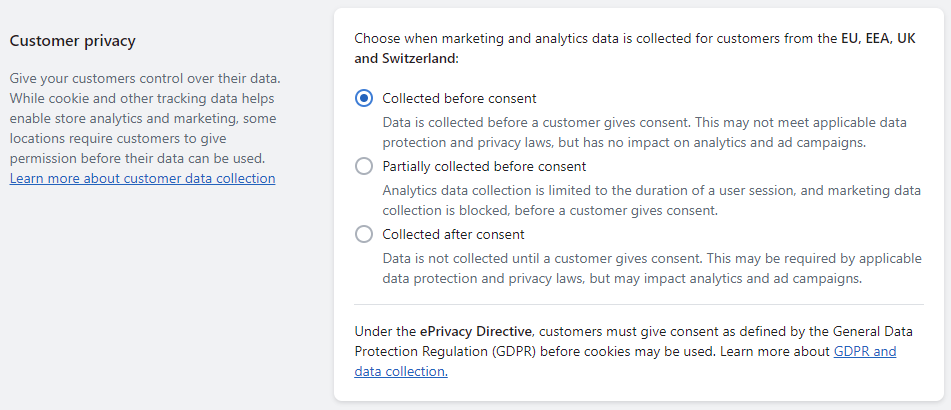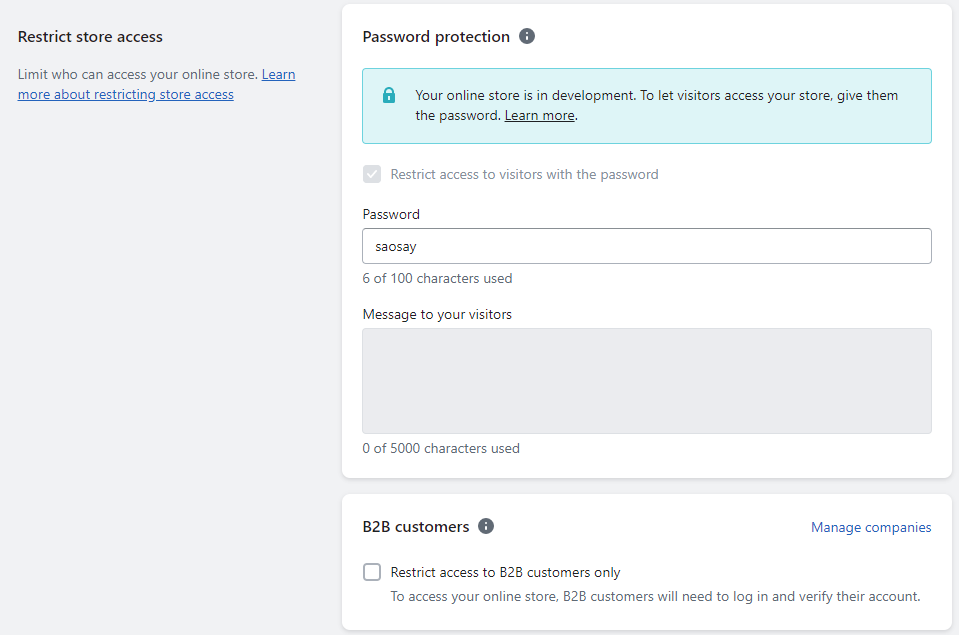Hello, Shopify Folks. ?
Welcome back to our brand new Shopify tutorial.
Today in this tutorial, we will learn about configuring store preferences in Shopify.
Contents
What are Preferences on Shopify?
Shopify online store preferences are a bunch of settings that allow Shopify admins to customize online store appearances and customer behavior tracking data. These Preferences on Shopify can be accessed from the Shopify store setting sections from the Shopify admin dashboard. Here is the set of Shopify preferences that Shopify admins can configure from their Shopify backend.
1. Title and Meta Description
Title and meta descriptions of Shopify online store preferences are the ones that help your Shopify store define its appearance on search engines when it is searched by customers and is listed in the search engine results.
2. Social Sharing Image
Social sharing is another store preference in Shopify. This Shopify preference is used when a link to your store is shared on social media. The content that you enter in the field, i.e., the image, page title and meta description, will be displayed on the screen of the receiver when your store link is shared.
This entered content will be displayed if and only if the system does not find a relevant product/page image.
For instance, if you have shared one of your store products via Instagram, but the system is unable to identify the respective product’s image, then the system will display your uploaded image in this social sharing field.
3. Google Analytics
As we know that Google Analytics is a tool that monitors your visitors surfing through your store and generates reports on the basis of those analyses. Fortunately, Shopify offers Google Analytics as a preference on Shopify store, which you can integrate with your Shopify store anytime you want.
The integration of Google Analytics with Shopify helps admins obtain valuable data about their customers regarding their activity and behavioral pattern.
4. Facebook Pixel
Shopify is a power-packed platform for every kind of business startup. It knows how to differentiate between your business and your Shopify store. If you want to sell your products online, Shopify allows you to integrate different sales channels into your Shopify store and help you sell online too.
Facebook pixel is one of the store preferences that allows your Shopify store to be integrated with your Facebook business account easily. Facebook Pixel monitors your online store customer’s behavior just like Google Analytics. The analytical data obtained by Facebook Pixel helps you improve your social media marketing strategies, including retargeting marketing.
5. Customer Privacy
Even you, as a Shopify admin, might have seen many “allow cookies” popups whenever you would have visited a new website. These cookies help businesses get your data. But you can control its functionalities from this customer privacy section.
Customer privacy is the section that allows customers to control their data. Cookies and other monitoring data help you with marketing and analytics. But this is not the scenario for all countries. In some countries, you must take customers’ consent before using their data. In this preference on Shopify, you can set the functionalities and learn the rules for data privacy from it.
6. Restrict store access
Being the proprietor of your Shopify store, you hold complete authority over the accessibility of your store pages. With Shopify’s user-friendly features, you can personalize your preferences by crafting a unique password, which can be shared only with the customers you wish to grant access.
7. Spam Protection
With the advancements in Shopify features, the spambots have advanced too. Spam protection is a Shopify store setting that allows you to secure your Shopify store from spam registrations by enabling Google reCAPTCHA.
This Shopify store settings allows you to enable and disable the Google reCAPTCHA on contact and comment forms as well as login, registration and password recovery pages.
Closing Call
Functionalities like these are what make Shopify a perfect business launching platform.
If you also want to start an online business with Shopify, hire a Shopify developer and develop a feature-rich Shopify mobile app for your business.
Happy Shopifying! ?
—————————————————————————————————————————————–
Frequently Asked Questions
(1) What are preferences in Shopify?
Answer: Preferences in Shopify refer to the settings and configurations that determine how your Shopify store operates and appears to customers. These settings allow you to customize various aspects of your online store to suit your business needs and branding. By adjusting preferences, you can control the behavior, design, and functionality of your Shopify store.
(2) Where can I find the preferences in Shopify?
Answer: To access the preferences in Shopify, you need to log in to your Shopify admin dashboard. From there, follow these steps:
- Click on “Settings” in the lower-left corner of the admin dashboard.
- In the Settings menu, select “Preferences.”
(3) What can I customize in the preferences section of Shopify?
Answer: In the preferences section of Shopify, you can customize several key aspects of your store, including:
- Store details: You can set your store’s name, contact information, address, and timezone. This information is used for order notifications, invoices, and other store-related communications.
- Store currency: You can choose the currency in which you want to display prices and process transactions in your store.
- Standards and formats: You can specify how you want to format numbers, dates, and units of measurement in your store.
- Checkout settings: You can configure various checkout options, such as enabling guest checkouts, specifying order processing workflows, and customizing order status pages.
- Legal: You can add and manage legal information, such as terms of service and privacy policies, that are displayed to customers.
- Storefront password: If your store is not yet ready for public access, you can set a password to restrict access and only allow approved visitors to view your storefront.
- Store availability: You can specify whether your store is visible and accessible to customers or if it’s temporarily unavailable.
(4) Can I change my store’s preferences anytime?
Answer: Yes, you can modify your store’s preferences in Shopify at any time. As your business evolves or your requirements change, you may need to adjust various settings to align with your updated needs. Shopify’s flexible platform allows you to make these changes easily, ensuring your store remains adaptable and optimized for your goals.
(5) Can I preview the changes made in the preferences before applying them to my store?
Answer: Yes, Shopify provides a preview option for most settings and preferences. This allows you to see how the changes will affect the appearance and functionality of your store before saving them. By previewing the changes, you can ensure that everything looks and works as expected, providing a seamless experience for your customers.
(6) Are there any restrictions on modifying preferences in Shopify?
Answer: While you have significant control over your store’s preferences, there may be certain limitations or restrictions based on your Shopify subscription plan. Some advanced features or settings may only be available in higher-tier plans.







